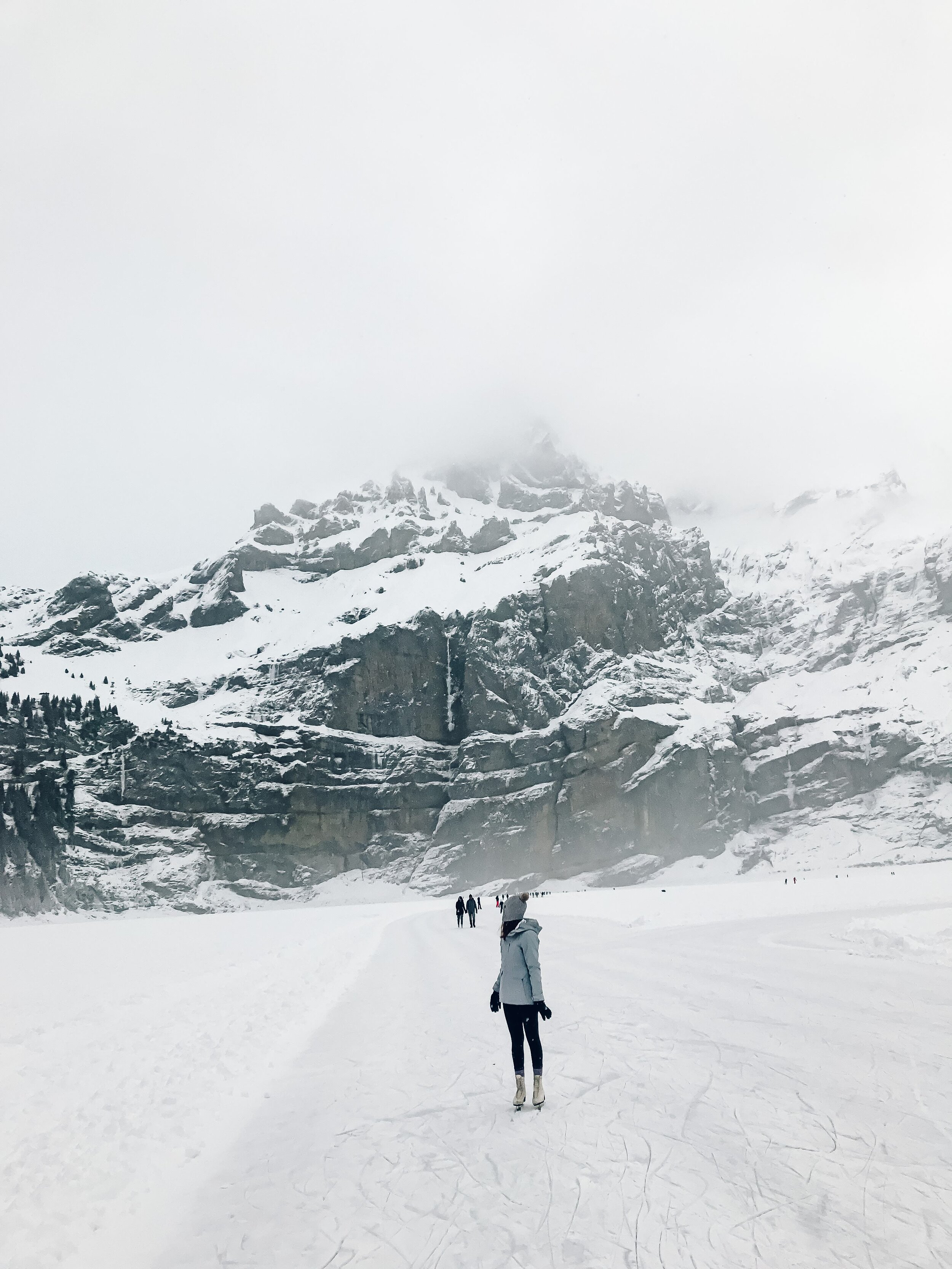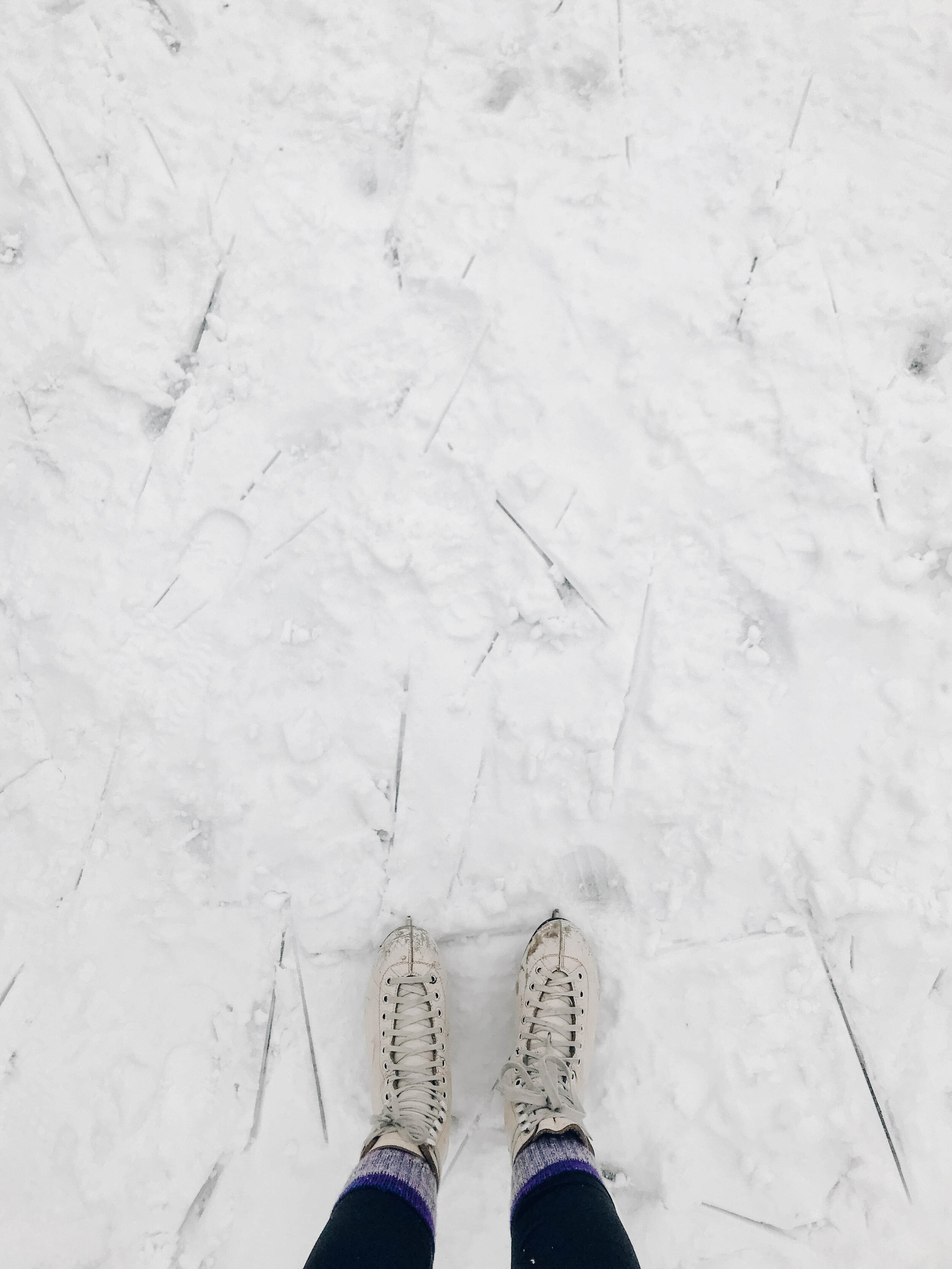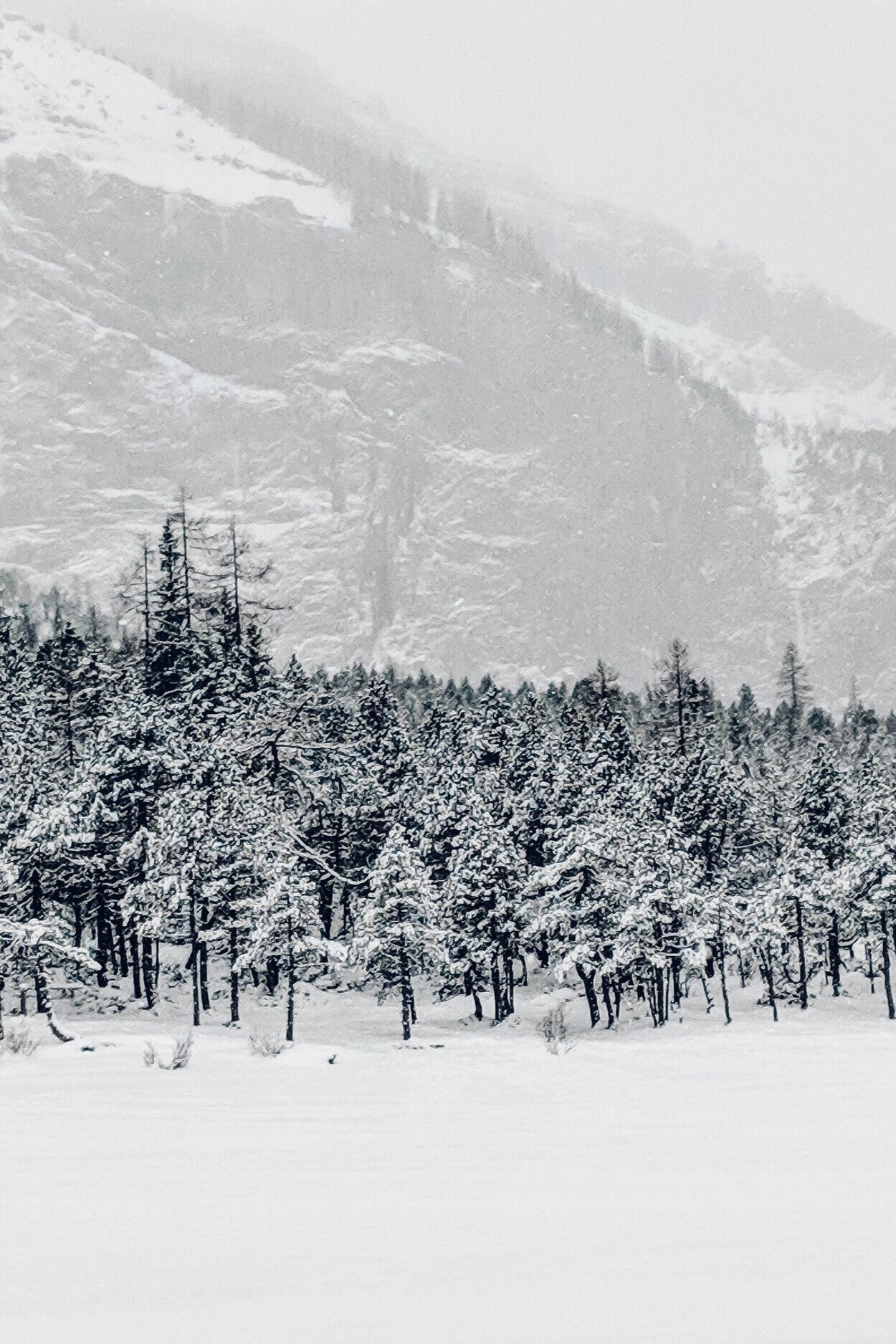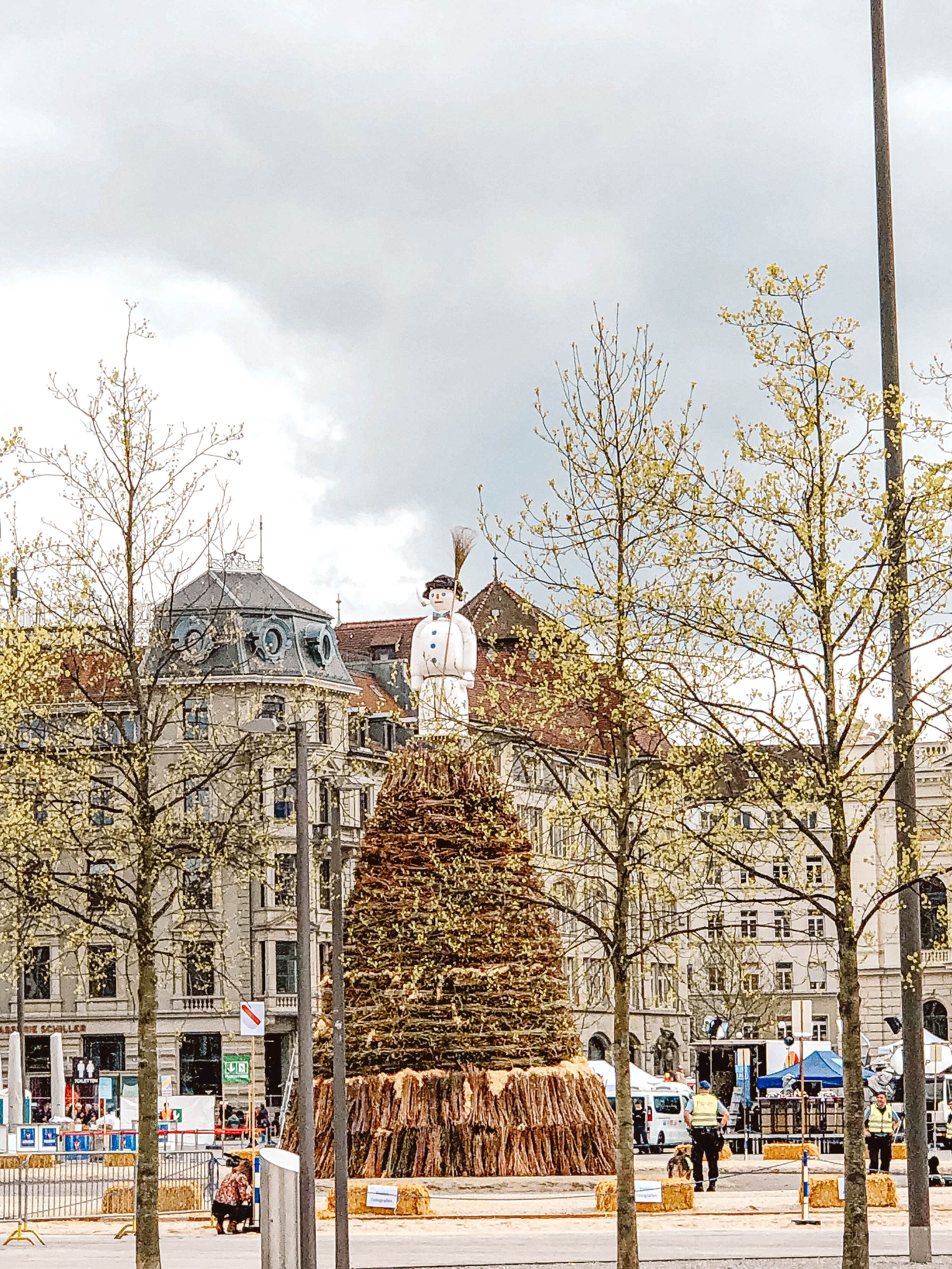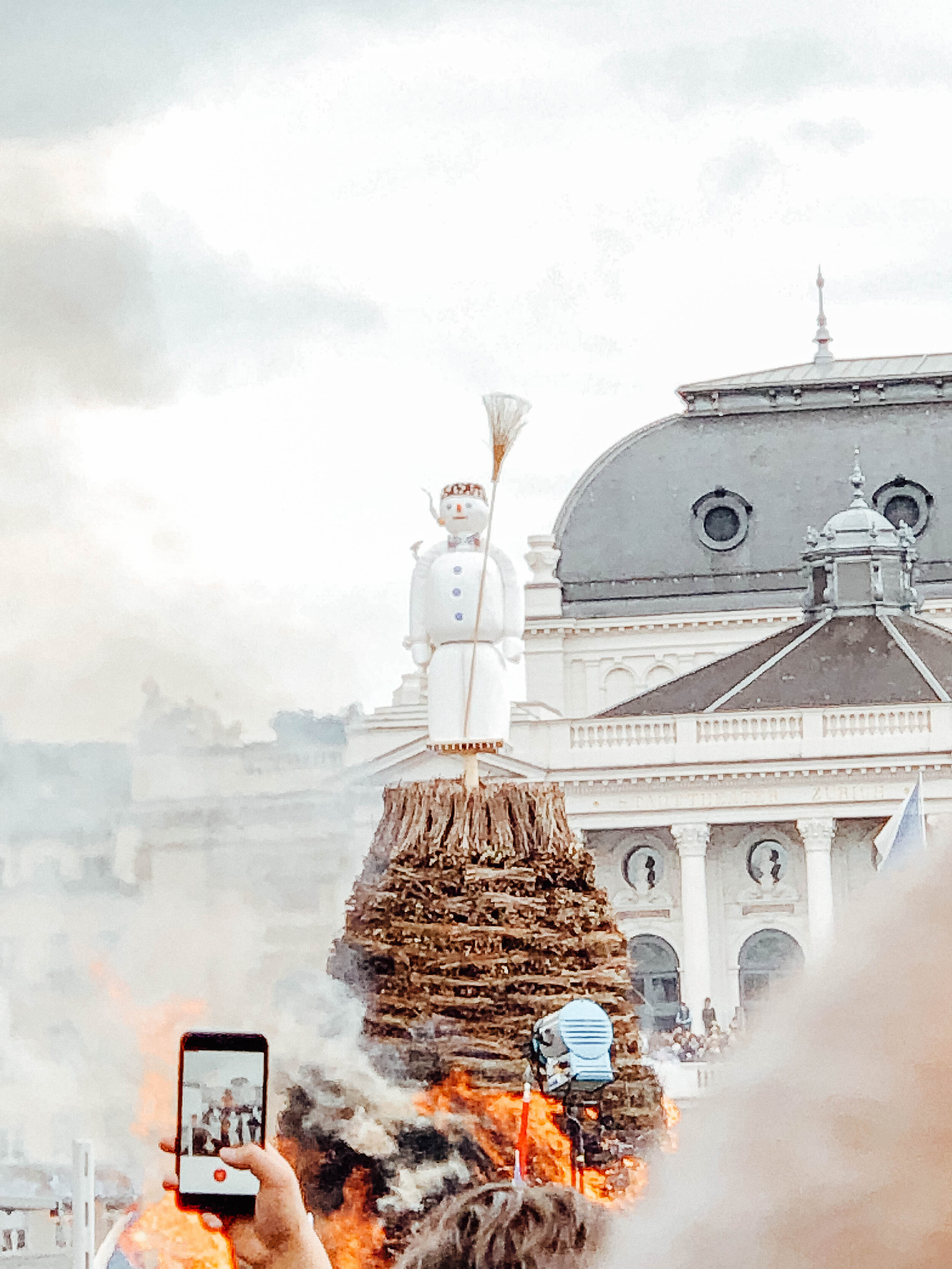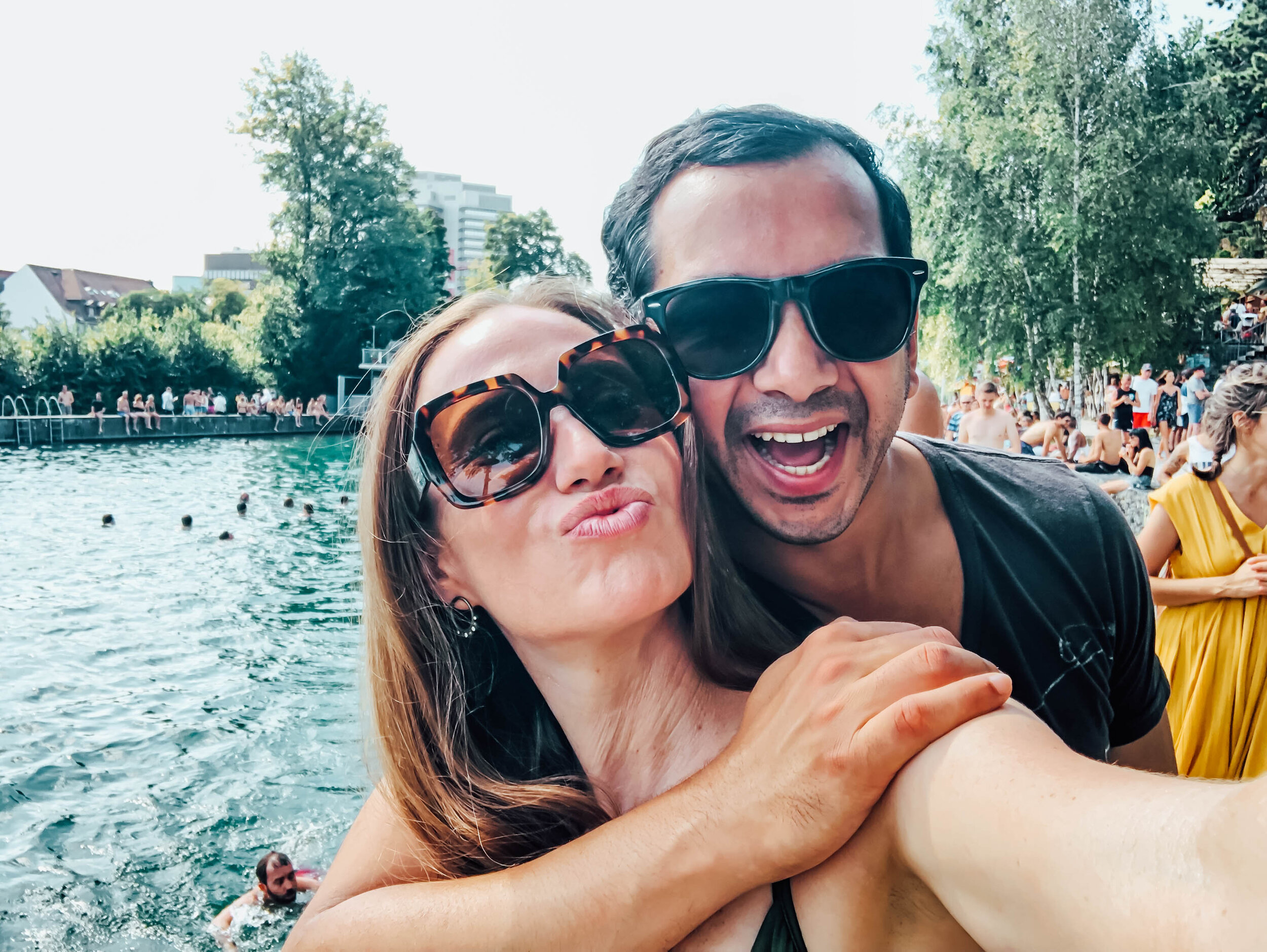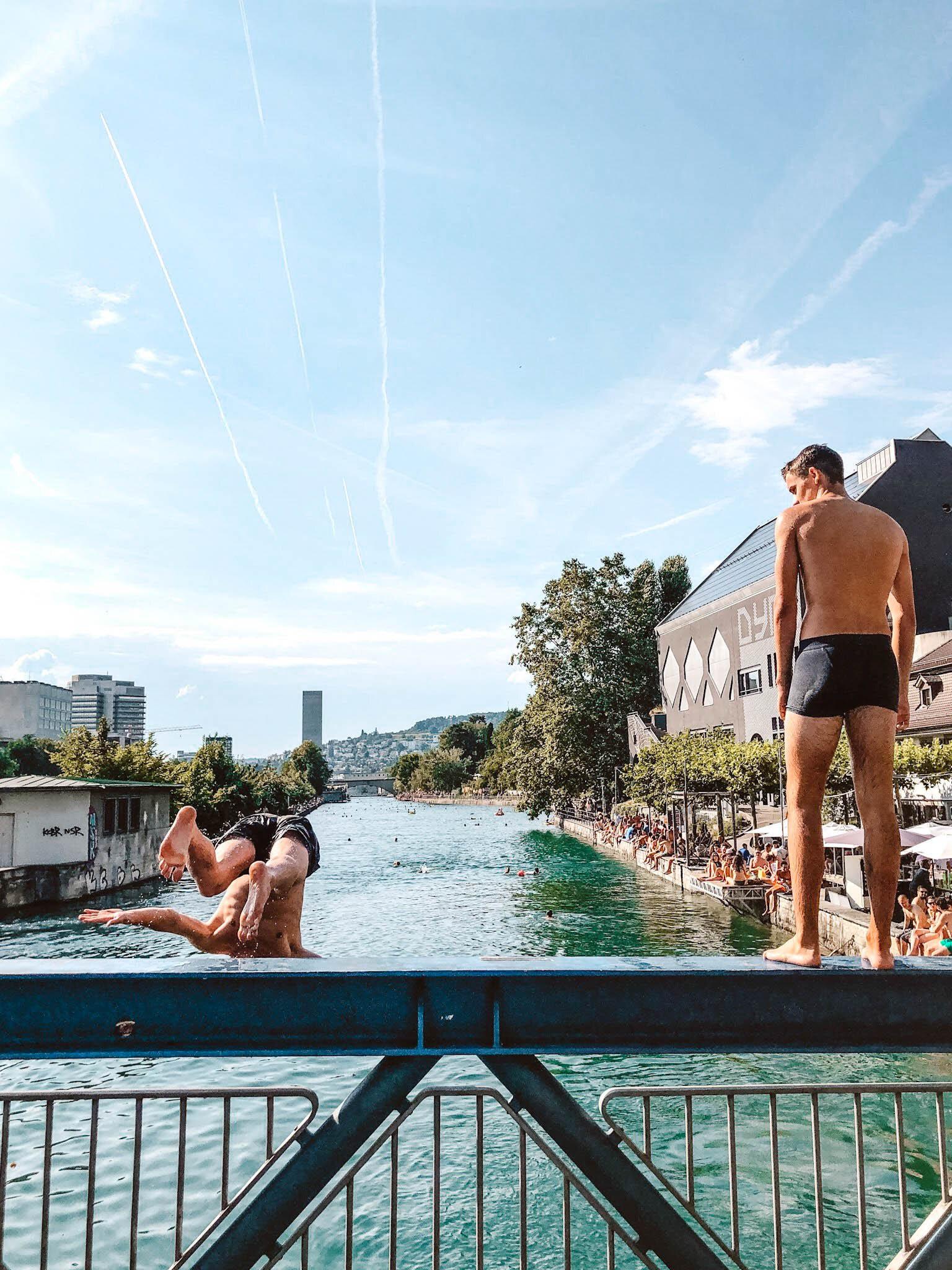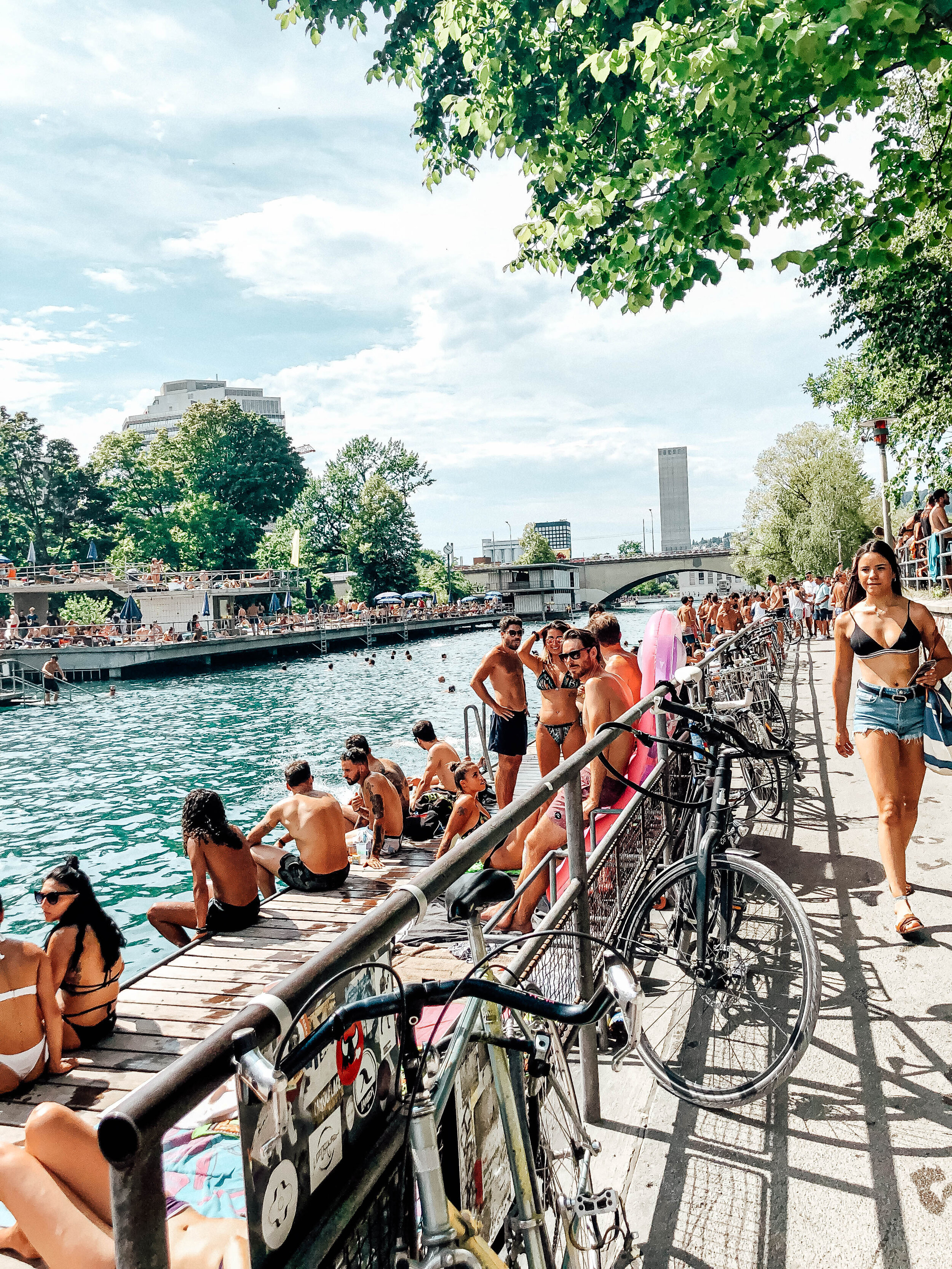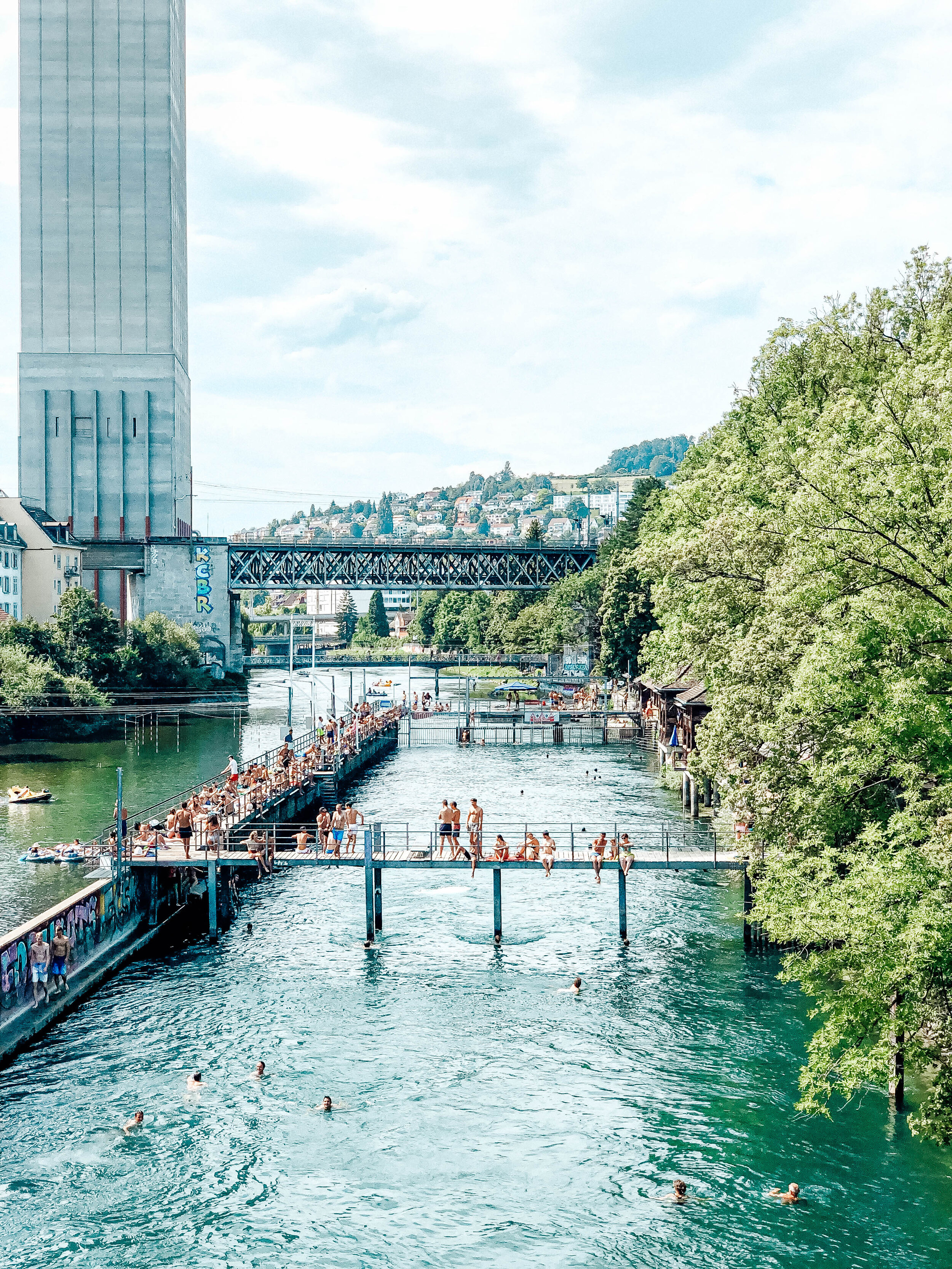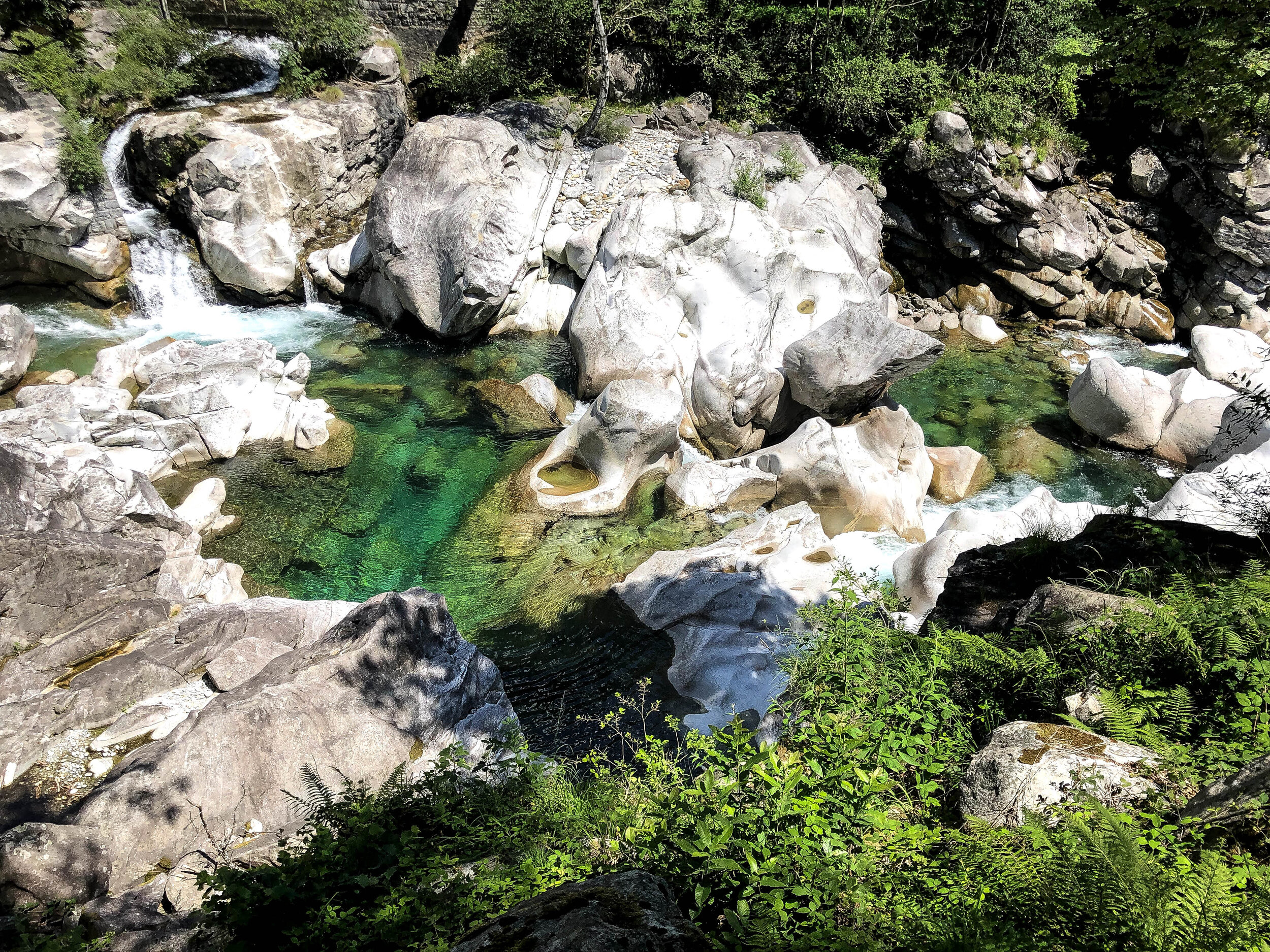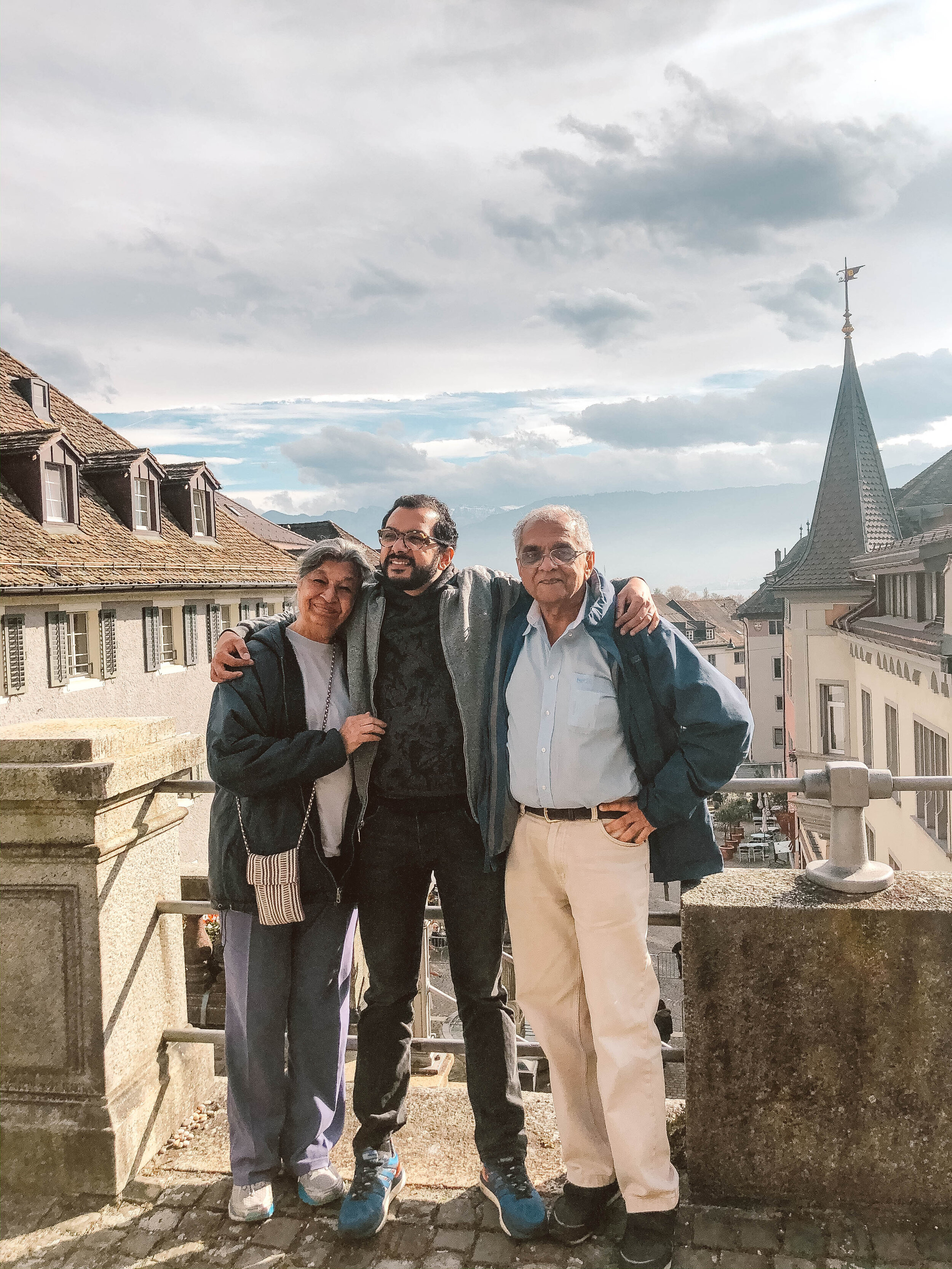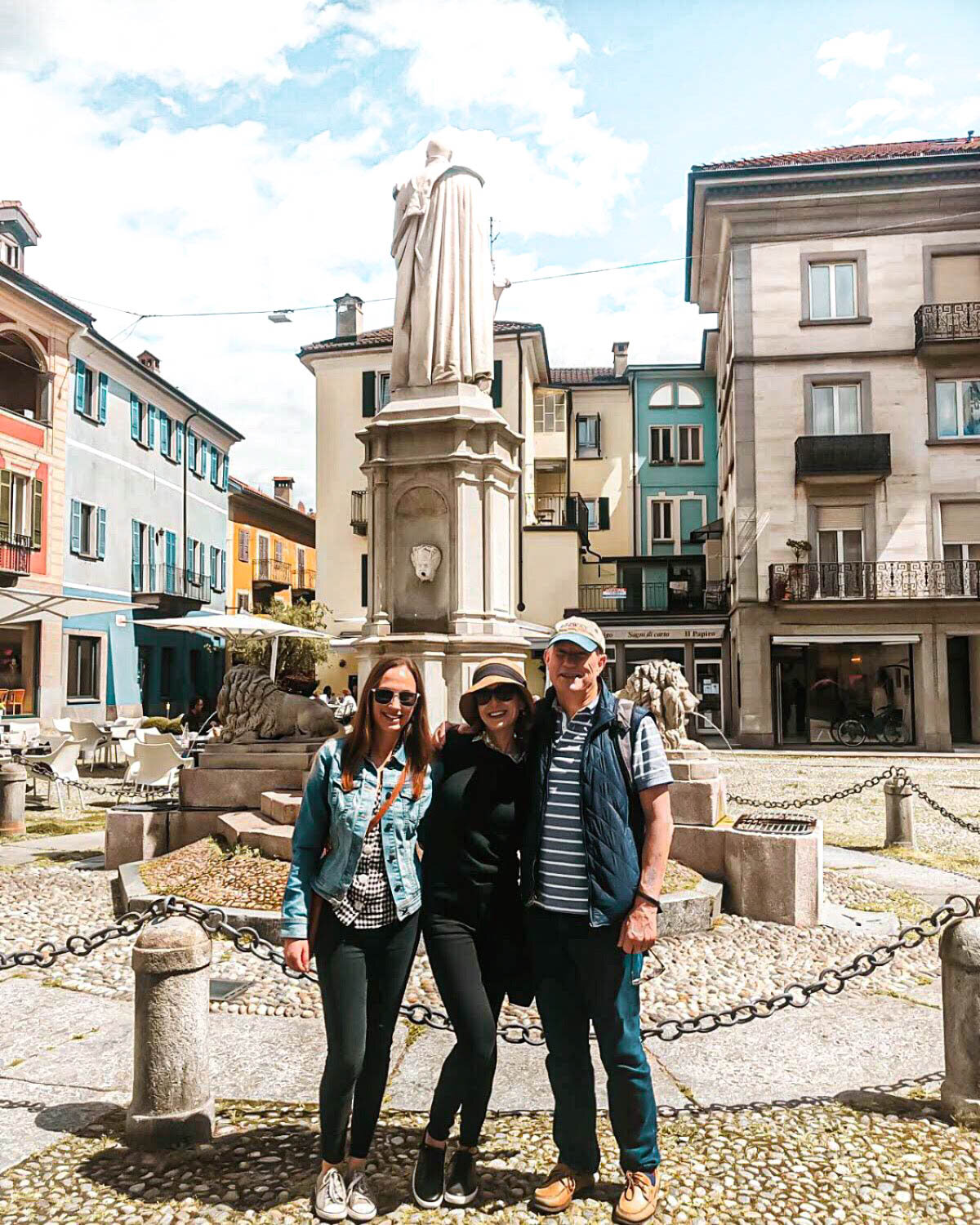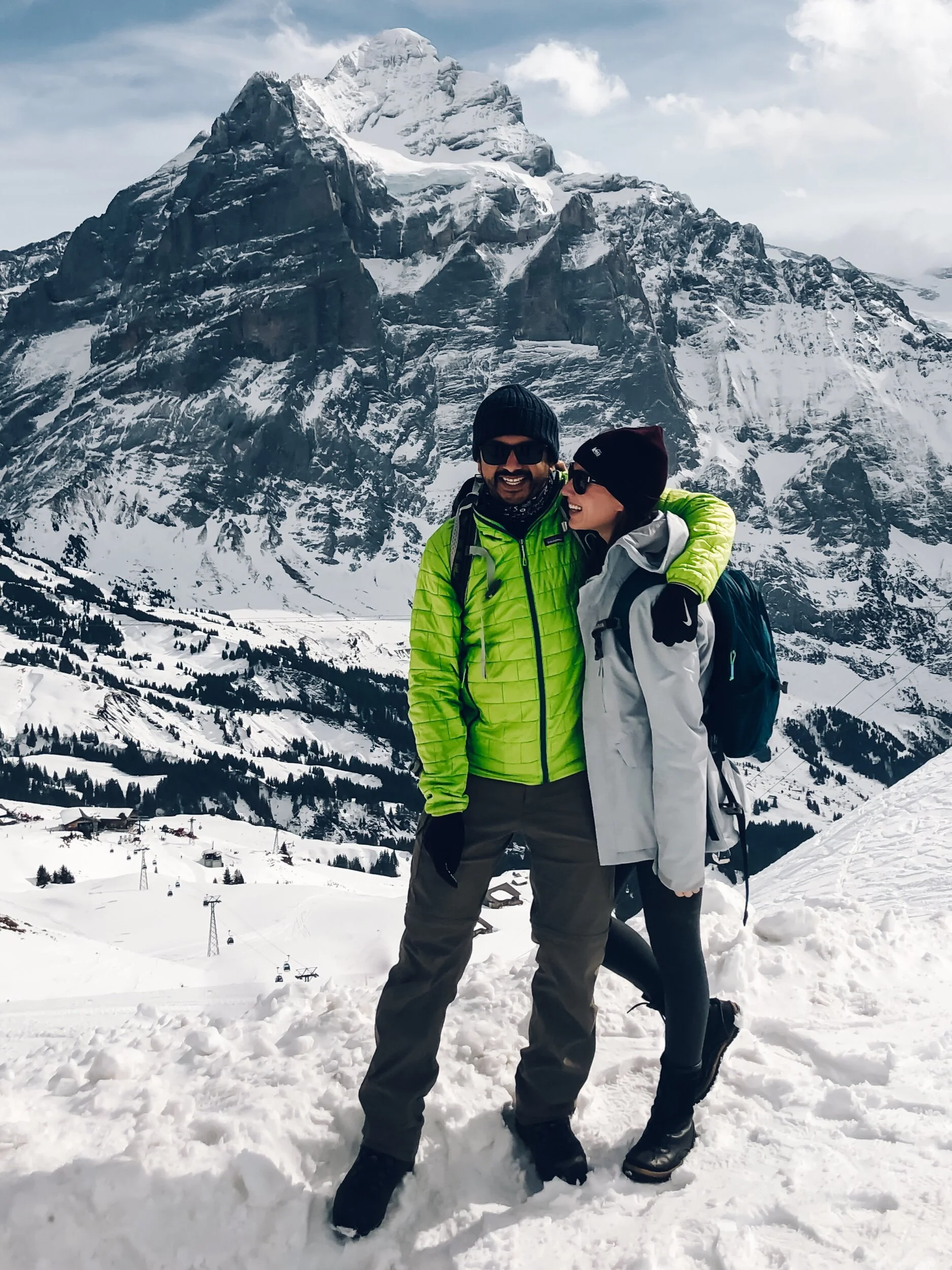My Top Ten Swiss Experiences of 2019
And just like that, it’s a new year and a new decade. This past year in Switzerland was our very first “full” year - a complete 365 days of calling this country home. We experienced every season: the deep moments of despair in late January when I wasn’t sure I could endure one more day of the freezing cold and sun-less gray skies, the two week-long all-consuming heat waves in the summer that nearly melted all of Europe, the spring cherry blossoms, the fall colors, the Christmas markets, and everything in between. There were lots of highs and quite a few unexpected lows, the building of friend groups and the really sharp pains of loneliness and homesickness. I felt accomplished and I felt challenged. It was a huge year of growth and learning, with a whole lot of fun and adventure along the way. Some of these experiences involve discovering beautiful places Switzerland has to offer, but most, in fact, are about the different ways we began to really find our own place here.
1. Ice-skating on Oeschinensee
Every so often, the weather conditions are just right for ice-skating on Oeschinen’s lake. Oeschinensee, nestled high up in the Bernese Oberland mountain range, is a vibrant turquoise color in the summer, but freezes into an equally striking inky black in the winter. The conditions for skating need to be perfect: cold enough to freeze the water to at least a certain thickness, but without snowfall to cover and fuse to the lake’s surface. Before 2018, skating wasn’t possible on Oeschinensee for nearly two decades. Last year, the skating season only lasted for 9 days. And we were lucky enough to make it there just in time, the day before the lake closed for the season.
I hadn’t been ice-skating in years, but slowly, the decades-old muscle memory returned, and my initial timid tippy-toe steps started smoothing out into something resembling a glide. Noise melted away, leaving just the crisp whoosh whoosh whoosh sound of the bite of the blades on the ice. Snow was falling, not heavily, but just enough to cover the black ice and my skates began to leave long trailing loops. Every so often, I’d stop and just stand, shaking my head in disbelief and laughing awe. Ice-skating at 1,500 meters above sea level. File this one under the one of the cooler Swiss experiences of my life. It was magic. The lake still isn’t open for skating in 2020, but if it does happen, you can bet we will be lacing up our skates once again.
2. Finding ourselves in a nude spa
We may not have skied in Zermatt, but we did find ourselves in, well, a different kind of typical Swiss situation. Our hotel, like many in Swiss mountain towns, had an in-house spa for the guests. Score! After a long day of winter hiking (we are on the same level as senior citizens in the winter), Raunaq and I donned our bathing suits and robes, ready to sweat out the days excursions, when we were met by the strangest picture on the sauna entrance: two icons of a man and a woman wearing swimmers, with a big black X across them. Obligatory nudity. It was a clothing-free co-ed spa.
Attitudes around nudity vary all over the world, and in Germanic and Nordic countries, nude spas are quite normal. Maybe I shouldn’t have been shocked by this, and I’m not conservative in the least, but this was my first mixed naked spa experience. You can never predict when little cultural differences will manifest themselves, and my American awkwardness toward nudity was no different. But what else could I do, besides pluck up my courage, take a breath, and shrug off my suit with (what I hope was) an air of casual nonchalance? It’s just a body! It felt bizarre and weird, but after a few minutes, I finally stopped concentrating on the nakedness and just relaxed. Liberating as it is, though, it does take some getting used to hanging around with all your bits hanging out. But for my first time going au natural, I think I did pretty good. We went back the next day, and I felt like a seasoned Swiss pro. It was memorable, to say the least! It’s also worth mentioning that Raunaq is very dogmatic about his feelings on spas and hot springs in general (as in, they should all be nude), and thus, was very comfortable with this Swiss arrangement.
3. Watching the snowman explode at Sechseläuten
Did you know that every year the people of Zürich burn a snowman in a gigantic bonfire in the middle of the city? I remember when we first moved here, and Raunaq kept on talking about this “exploding snowman festival.” Well, we went this April, and it was just as crazy as we anticipated. Sechseläuten is a Zürich tradition, dating from the 16th century, that celebrates the end of winter and beginning of spring. Every April, there is a city-wide parade, where representatives from the 25 medieval guilds make their way through the old town, some riding on horseback, all in traditional costumes. The procession culminates at Sechseläutenplatz, where a huge crowd is surrounding a towering bonfire in front of the Opera House. It’s topped by the Böögg, a snowman effigy that symbolizes winter.
At precisely 6pm, the fire is light, and guildsmen and horses gallop around the fire in a frenzy as everyone anxiously awaits the Böögg to explode. The snowman’s head is packed with firecrackers, and the myth is that the faster the Böögg burns, the longer and hotter the summer will be. And guys, this fire is BIG. I’m sure all the appropriate precautions are set in place, but it’s a massive fire! In the middle of the city! With horses! And lots of kids around! On a Monday afternoon! What?! After, everyone is invited to roast bratwursts on the embers, for the world’s largest public barbecue. It’s a public holiday and the whole thing is just WILD. I love it.
4. Becoming a Limmat convert
My first summer in Zürich, I was all about that lake life. Can you blame me? Lake Zürich is the lake of many colors, a crystal clear body of water that emits an irresistible pull to its shore. Lake Zürich turned me, at long last, into a water person. But my second summer in Zürich, the summer of 2019, I cheated on my first love with Zürichsee’s younger, cooler sibling: the Limmat. The Limmat is the main river that cuts through the heart of Zürich, weaving through Kreis 5 and the Old Town before fusing with Lake Zürich. And yes: the Limmat is a city river that you can swim in, which, to anyone who lives in a city with a river, should already be quite shocking. But this is Switzerland, after all. Like the lake, the river is perfectly clear and impossibly clean.
There are two badis, Oberer Letten and Unterer Letten, that run along the river, creating one big urban beach and sundeck. Hanging out at one of the Limmat badis in the summer is an experience in itself. The water is much colder than the lake water, and when it’s 30+ degrees, there is nothing more refreshing than a plunge off one of the diving boards. Limmat’s current is fairly strong, too, so after a jump you can float downriver for a bit before climbing out and doing it again. In fact, lots of people bring inner-tubes to turn the Limmat into one big lazy river (it’s on my bucket list for summer 2020!). And the vibe is just - cool. It feels like a bumping pool party every sunny day of the week, and I spent many a summer day enjoying this urban oasis. Lake Zürich, you’ll always have my heart, but last summer, the Limmat gave it some stiff competition for my number one.
(Also, click here for Europe’s best-kept secret!)
5. Finding the best place for rösti
Everyone has a favorite place for rösti, and I finally found mine at Mesmer Berghaus, a tiny mountain hut near Appenzell. The Appenzell region is in Eastern Switzerland, among the Alpstein mountain range and close to the border with Liechtenstein. It’s known for its rural customs, and feels quintessentially Swiss. So, it shouldn’t be too much of a surprise that this is where I found the perfect rosti. Rösti, my American friends, are Swiss hash browns - grated potatoes molded into a large pancake and fried. It’s a classic, hearty, Swiss dish found throughout Germanic Switzerland. Being a vegetarian, I order rösti a lot, so I consider myself a bit of a connoisseur. And this rösti was the best of the best.
Perfectly crispy, well-seasoned, a glorious golden brown, topped with two cheery fried eggs and a light dusting of paprika and Aromat. I all but licked the plate clean. But fair warning: if you want it, you are going to have to work pretty hard to get it. With great effort comes great reward, right? The Mesmer Berghaus was the halfway point on our hike from Wasseraun to Ebenalp, and we only got to it after about three hours of sweaty hiking and two steep (but beautiful) ascents. The next mountain hut after Mesmer is also about three hours away, so really, there is no way to get there without strapping on your hiking boots and hitting the trail. Which made the fact that most of the hikers in the hut were also enjoying huge mugs of lager all the more impressive. I would most definitely not be able to hike for miles with a belly full of fried potatoes and beer. But then again, I’m not fully Swiss yet. Maybe next year!
6. Attempting to learn German
When we moved in the summer of 2018, I gave myself six months to settle in, explore, and try to build a community instead of immediately throwing myself into language lessons. But once January hit, I told myself that it was time, and signed up for an A1 German course with a Russian teacher and two Bulgarian guys. That first class was a train-wreck. Even though I’d been in Zürich for six months, embarrassingly, I hadn’t picked up any bit of the language at all. Not Swiss German, and definitely not hochdeutsch (High German). The first task for the three of us was to each read a basic paragraph aloud, and then introduce ourselves using what we had learned. I stumbled over jumbled-looking letters in a dire attempt to sound them out, the teacher stopping me at every single word to correct my pronunciation, and every time I repeated her I somehow bungled it even more. My turn to read aloud stretched painfully long. Thirty minutes in, I wanted to cry. This language was impossible.
When the class was finally over, the teacher asked us how we felt about the pace of the lesson. “It makes sense to go at the pace of the slowest,” the Bulgarians responded, looking at me. I’ve come a long way since that first lesson. I was unanimously awarded “most improved” by the end of the three months, and I even managed to get through an A2 intensive course over the summer. I’m barely conversational, nowhere near fluent, but I’m trying really hard and slowly, but surely, making progress. I even see the beauty in the German language now.
P.S. Looks like Raunaq will be joining me on the German language train this year, thanks to the new strict language regulations Switzerland is enforcing for foreigners in 2020. Los geht’s!
7. Starting graduate school
A favorite experience? Yes. An easy one? Not by a long shot. I’m including this one not because it has been particularly enjoyable, but because it has been a long time coming. It was always in the back of my head to go to graduate school for Political Science, but life had a different plan for me. Instead of grad school, I backpacked solo through Central and South America, moved to Tegucigalpa, Honduras for a few years, ended up in San Francisco where I continued to work for social causes I was passionate about and met my soulmate (cheesy! But true!) - until we moved to Zürich and the stars aligned and I saw my chance to finally go back to school and get the degree I told myself for 12 years I was going to get. I applied to ETH in the fall of 2018, but didn’t find out I was accepted until March of 2019, and started in September.
It’s been a challenge. Not just academically (which is it!), but mentally and socially, too. The first few months I could barely keep my head above water with the workload, I felt old and out of place, I struggled with the unfamiliar way of the European school system, and I questioned more than a few times exactly what I was doing. I don’t know what I expected - but I didn’t expect it to be this hard. It was humbling. But above all, I feel grateful for the opportunity. Because I am learning so much, seeing new and interesting ways to apply research to real-world issues, and connecting with my classmates who bring their own perspectives and interests from all over the world. And I proved that I can STILL stay up until 5am and party with the 22-year olds, too! As the year came to a close, I felt more accomplished than I have in a really long time.
8. Hiking to Lavertezzo in the Valle Verzasca
Something magical happens once you pass through the Gotthard tunnel. The language turns melodic, the foliage grows lush, the train chatter becomes louder, the vibe warms with the weather. Ticino, in the Italian area of Southern Switzerland, is another world completely. The whole region is steeped in history and beauty, but the star of this world might very well be the Valle Verzasca and its striking turquoise water. After five hours of hiking on the Sentiero Verzasca, we ended in Lavertezzo, at the double-arched Roman bridge known as the “Ponti di Salti,” the bridge of jumps.
The water looks like melted emeralds, fed by glaciers and frigidly cold, but after a long sweaty hike in the Swiss-Italian sun, it was gloriously refreshing. After jumping in, we warmed back up by laying on the smooth, sun-drenched rocks. This area is by no means undiscovered - it was packed with people the day we were there - but it still manages to retain this idyllic, Italian flair. The valley surrounding the river is green and thick and slightly overgrown, with tiny ancient towns built of stone clustered throughout, and the entire trip is like a Mediterranean vacation. It’s so picturesque it hurts. The whole place feels so different than the rest of the country, and yet, it is still Switzerland. These distinct regions are one of my very favorite parts of this country.
9. Hosting my first fondue plausch
Now, some of the more touristy restaurants might serve fondue year-round, but it is technically a dish that should only be eaten in the winter months. Which makes sense when you think about it, because do you really want to eat hot melted cheese in July, when there is no air conditioning and rivers of sweat dripping down your thighs (not like I’m speaking for experience or anything…)? But you’ll know when fonduezeit (“fondue time”) rolls around come October. All the shops begin to stock fondue cheese and fondue pots, and temporary fondue chalets pop up all over the city. So when a couple of my classmates decided that we should have a Fondue Plausch in November for our cohort, I was super eager to host. It feels a bit like a rite of passage.
16 people packed into our apartment on Tuesday night, and right before we started cooking the fondue, my classmate warned me to “close all the doors.” It’s because the smell of fondue is distinctive and strong, and that scent manages to dig deep into the fibers of all furniture it touches. If you’ve smelled fondue before, you know what I’m talking about. We made three different types of fondue, went through four gigantic loaves of bread, and despite airing it out the next day, our apartment smelled like cheese and mulled wine for over a week. And if that isn’t a great sign for my first fondue party, I don’t know what is. Also: lack of photos = great party. Oh! And I learned the proper way to dip fondue: you dip, then swirl the bread into a figure 8. This not only evenly coats the bread, it continues to mix the cheese and keep the bottom from burning. I tell you, the Swiss think of everything.
10. Showing off Switzerland to friends and family
2019 was the year that Switzerland finally began to feel like home. So, what better year to host all of our family and friends! This was the year that we put our “guest room” to good use (it’s in quotations because it is really just our office with a futon, but it works!) Raunaq and I hosted both sets of our parents, my little sister, friends from college, friends from San Francisco, friends from Bombay, friends from Australia...the list goes on. And we took them everywhere. It was so much fun! When you are an expat, having friends and family come visit is a time -maybe the only time - to show them a snapshot of your new life. It’s a chance to show all the things you have told them about: the cafes, the views, the grocery stores, the trains, the little quirks, the language (barely!), all the daily routines of your life. It's a merging of the old and the new.
But, it's also been a time for me to explore who I have become in this new place. To feeling like maybe I do understand this city, and maybe it understands me, and that I'm not just showing off an old town or mountain range or museum, but a home. It's a time for me to say - proudly - "We've made this work. We are creating a life here." And it was really special and exciting to be able to make our loved ones a part of it.
It was hard to narrow it to just 10, so here are some strong honorable mentions:
embracing the art of the solo hike
seeing the golden larch trees in Alestch
continuing to discover incredible hikes throughout the country.
And, of course, starting this little blog, which will celebrate it’s one-year anniversary on January 21st. I know I fell off the writing wagon in the last few months of the year (student life overtook everything else), but I’m eager to get back at it in 2020. Reflecting on it, writing all about our experiences living in Switzerland has been the ultimate Swiss experience. I love being able to document and share it all. So thank you, as always, for reading along.


